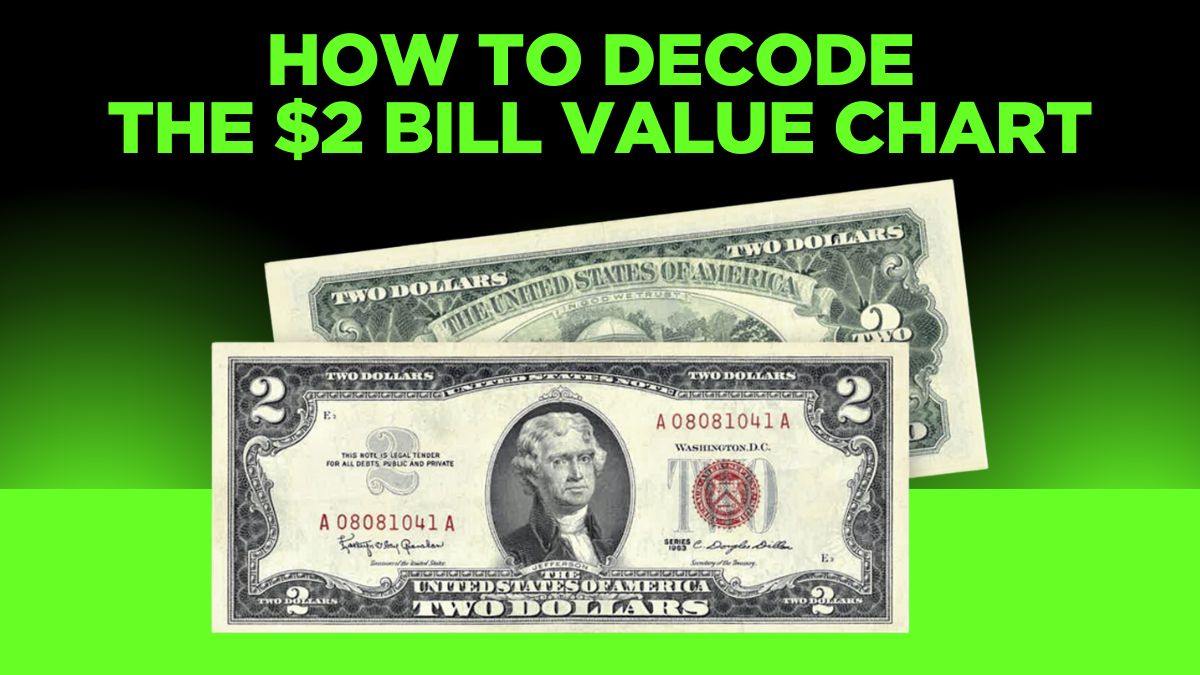The $2 bill, often overlooked in everyday transactions, holds a fascinating place in U.S. currency history. While many consider it a novelty, some $2 bills are worth far more than their face value. Understanding what makes these bills valuable is essential for both collectors and curious owners.
What Determines the Value of a $2 Bill?
Several key factors influence the value of a $2 bill, from its age to unique printing features. Here’s what to look for:
1. Age and Series
Older $2 bills, especially those from the 19th and early 20th centuries, tend to be highly valuable. For instance, uncirculated $2 bills from the 1890 series can command prices exceeding $4,500 at auctions.
2. Condition
Condition is crucial. Uncirculated bills—those without folds, creases, or wear—are significantly more valuable than circulated ones. Even a minor crease can drastically reduce a bill’s worth.
3. Serial Numbers
Unique serial numbers can substantially increase value. Look for:
- Low Serial Numbers: Numbers like 00000001 or 00000008.
- Palindromic Numbers: Serial numbers that read the same backward and forward.
- Star Notes: Identified by a star (*) at the end of the serial number, these are replacement notes printed in limited quantities and are highly collectible.
4. Printing Errors
Misprints or printing errors, such as misaligned prints or ink smears, are rare but can make a $2 bill significantly more valuable. For example, a $1 bill with mismatched serial numbers once sold for $30,000.
$2 Bill Value Chart
Here’s a breakdown of estimated values for various $2 bill series:
| Series Year | Seal Color | Circulated Value | Uncirculated Value | Notes |
|---|---|---|---|---|
| 1862 | Red | $500+ | $1,000+ | First $2 bill issued during the Civil War. |
| 1890 | Brown | $2,000+ | $4,500+ | Known as “Treasury Notes”; highly sought after. |
| 1928 | Red | $5 – $50 | $100+ | “Red Seal” notes; value depends on condition. |
| 1953 | Red | $2.25 – $6.50 | $12+ | Star notes are especially valuable. |
| 1963 | Red | $2.25 – $6.50 | $12+ | Similar to the 1953 series; check for star notes. |
| 1976 | Green | $2.50 | $4.50 | Issued for the Bicentennial; first with a green seal. |
| 1995 | Green | $2.25 – $3.25 | $18.50 | Star notes from BEP Millennium Folder are valuable. |
| 2003 | Green | $2.25 – $3.00 | $900+ | BEP Premium Set star notes are highly prized. |
| 2013 | Green | $2.10 – $2.25 | $2.25 – $3.00 | Modern issues; generally face value unless uncirculated. |
| 2017 | Green | $2.00 | $2.10 | Currently in circulation; typically face value. |
How to Identify Hidden Gems in Your $2 Bill Collection
Think you might have a valuable $2 bill? Follow these steps to find out:
1. Check the Serial Number
Look for unique patterns or a star symbol. Recently, a $2 bill with the serial number L 00000008* sold for $1,631, even in poor condition.
2. Assess the Bill’s Condition
Bills without folds, tears, or wear are far more valuable. Keep them in protective sleeves to preserve their condition.
3. Search for Printing Errors
Errors can skyrocket a bill’s value. A notable example includes a misprinted $1 bill fetching $30,000 at auction.
4. Get a Professional Appraisal
If you suspect your bill is valuable, consult with a currency expert or reputable dealer. They can provide accurate valuations and selling advice.
FAQs
1. Are $2 bills still in circulation?
Yes! Although less common, $2 bills are still produced and used. As of 2022, approximately 1.5 billion are in circulation.
2. What makes a $2 bill valuable?
Key factors include age, condition, unique serial numbers, star notes, and printing errors.
3. How can I identify a star note?
Star notes have a star symbol (*) at the end of the serial number, indicating they are replacement notes.
4. Where can I sell my valuable $2 bill?
You can sell valuable bills through auctions, online marketplaces, or reputable currency dealers.
5. Is a 1976 $2 bill worth more than face value?
Yes! A circulated 1976 $2 bill can be worth around $2.50, while uncirculated examples may fetch up to $4.50.
While most $2 bills are worth their face value, certain factors like age, condition, unique serial numbers, and printing errors can significantly increase their value. With the right knowledge, you might discover that a seemingly ordinary $2 bill in your wallet is actually a hidden treasure.


Need go check coins I may have some where can I find coin collectors